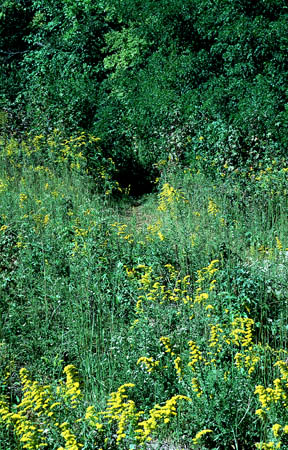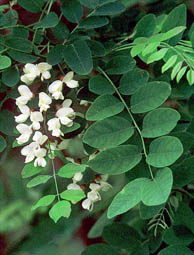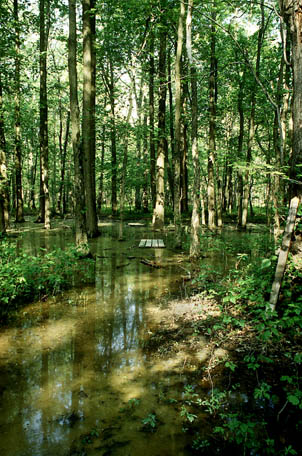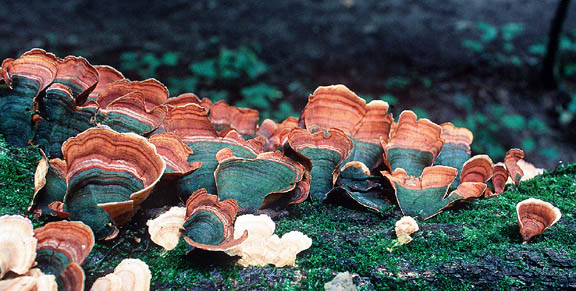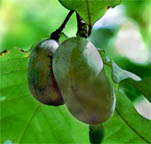|
|
of Twin Swamps Nature Preserve |
|
| ||
|
|
|
|
|
| ||
|
| ||||||
|
The trail through the woods is almost always mucky, so you'll be glad if you wore waterproof boots. Mosquitoes and ticks are plentiful,and poison ivy abounds. Long pants and insect repellent are highly recommended. The mud is no fun, but please stay on the trail to help preserve the plants in the woods.
|
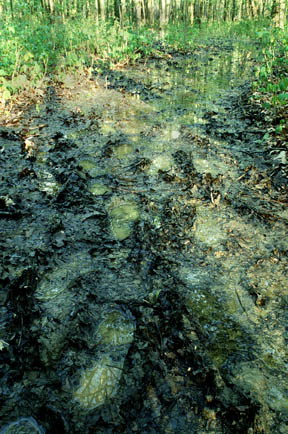 |
|
| |
|
In early spring, when the rains have been heavy, the trail sometimes floods. The water's only a few inches deep and the flooded section is about 50 feet across, so intrepid hikers slog on through.
| |
|
| |
|
Take only photographs and leave only footprints. My muddy boot track from a previous hike was visited by a deer and a raccoon.
|
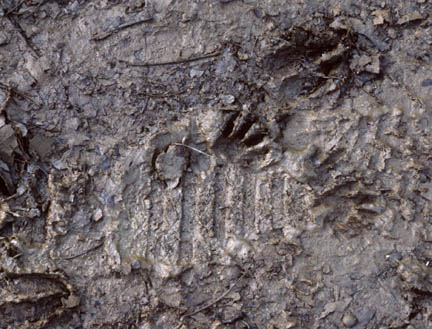 |
|
| |
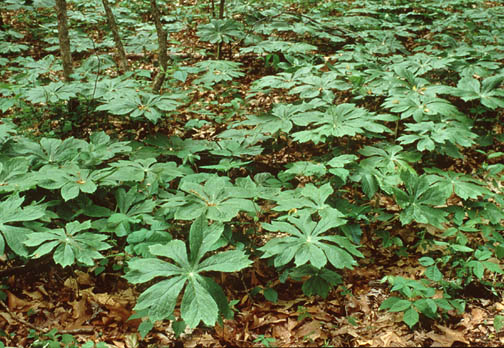 In April, vegetation is sparse along the first half of
the wet and mucky trail. But when the trail starts to rise,
the soil is better-drained and many more plants are found.
The big umbrella leaves of
mayapple carpet much
of the woodland floor.
|
|
The variety and bizarre beauty of the mushrooms at Twin Swamps is astounding. |
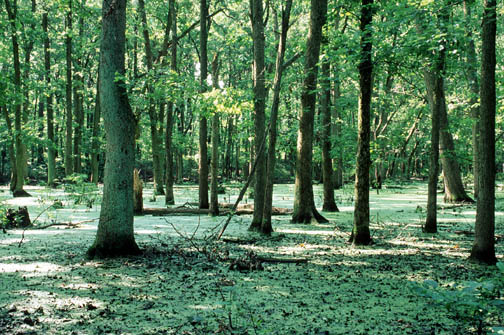 |
|
|
|
This is the "twin" to the bald cypress swamp. The oak
slough is not as inviting as the cypress swamp,with its
boardwalk. But the overcup oaks are interesting because,
like the cypress trees and several other plants at Twin
Swamps, they reach the northern limit of their range here at
the southwest tip of Indiana. These trees thrive better than
others in standing water, so they tend to dominate shallow
sloughs such as this. (The water here is carpeted with pale
green duckweed.) The tree gets its
name from its unusual acorn. The cap of the acorn nearly
covers the meat of the nut, making the acorn look like a
big, scaly marble. (As soon as I get a decent picture, I'll
try to show you what it looks like.)
|
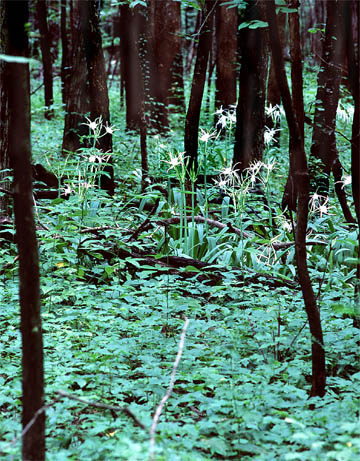 |
|
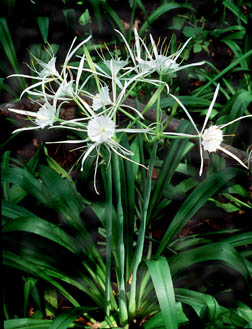
|
|
The exotic flowers of the spiderlily are seen from afar in the dark woods. Like the overcup oak, this plant reaches its northern limit in southern Indiana. | ||
|
| ||
|
Showy cardinal flowers bloom in August. Look for them along the northern edge of the overcup oak slough.
|
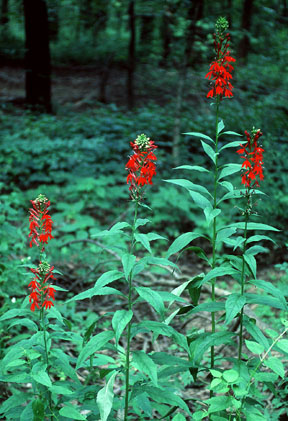 |
|
| |
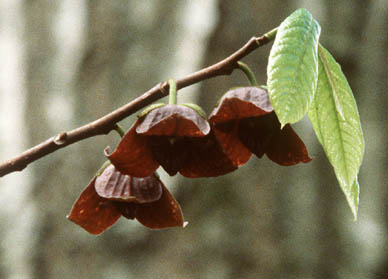 |
|
|
|
Pawpaw is a small tree with real big leaves. The brick-colored flowers bloom in April. By the end of the summer, the edible fruit will be found. Some say the fruit tastes better after the first frost. The pawpaw is the host plant for the beautiful zebra swallowtails that are sometimes seen at Twin Swamps. | ||
|
| ||
 |
|
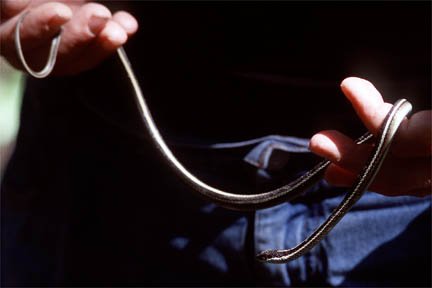 |
|
Reptiles and amphibians are plentiful at Twin Swamps. I
actually have encountered very few snakes on my many trips
to the preserve, and none of them have been poisonous.
You're much more likely to see frogs and toads and
turtles. This ribbon snake seemed to
be making a singing sound from inside his hole.
| ||
|
Plant Index Trail Map |
